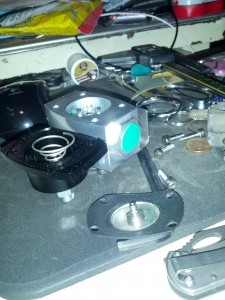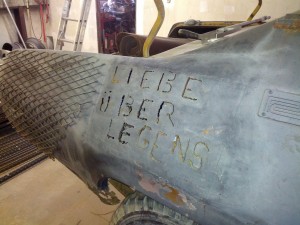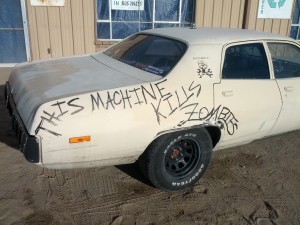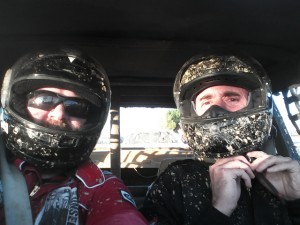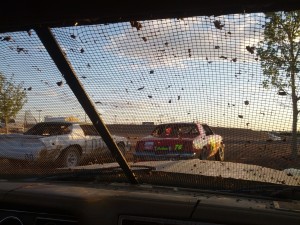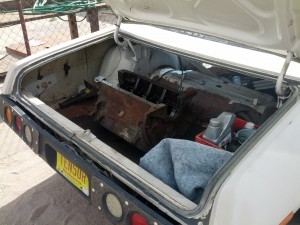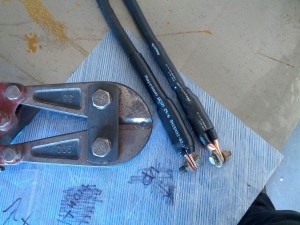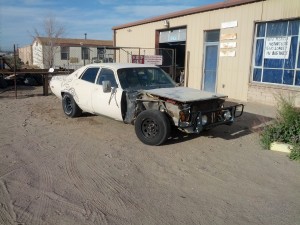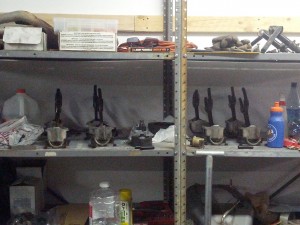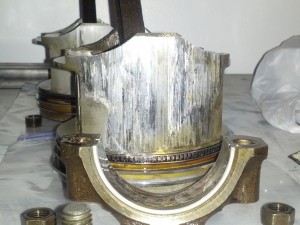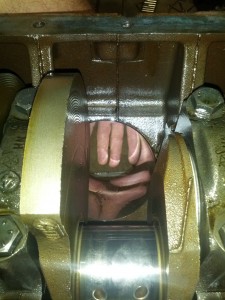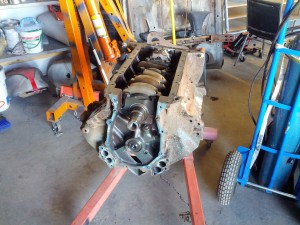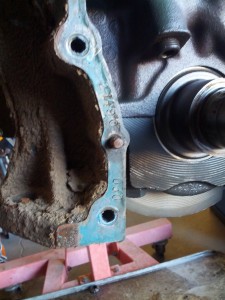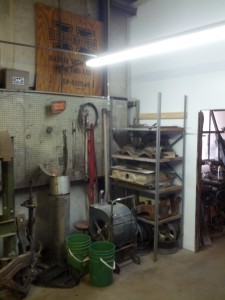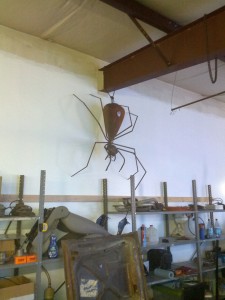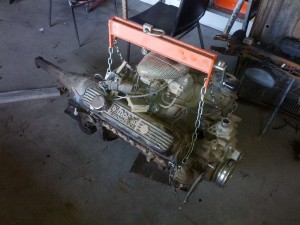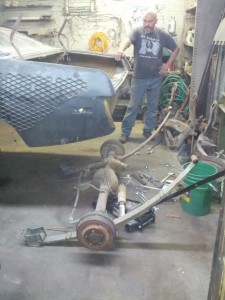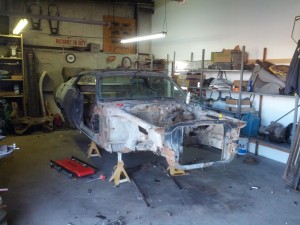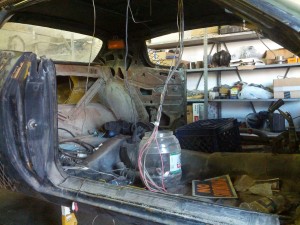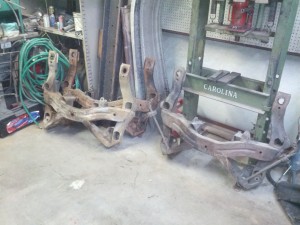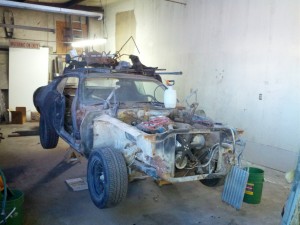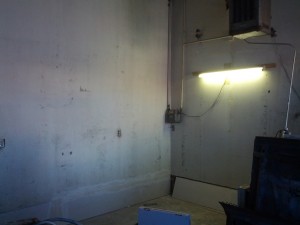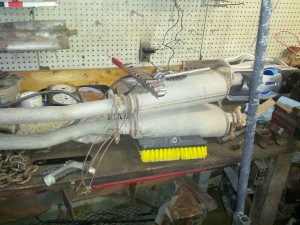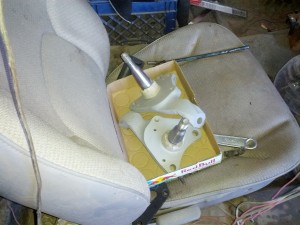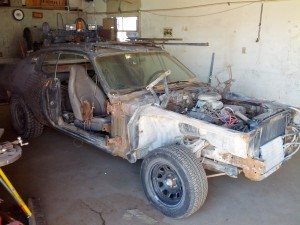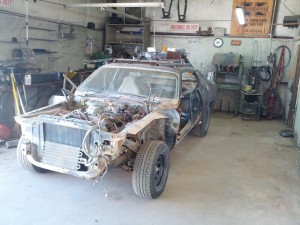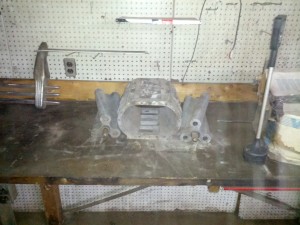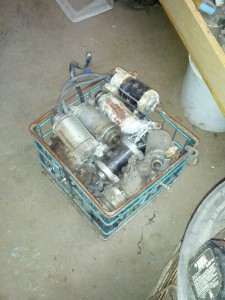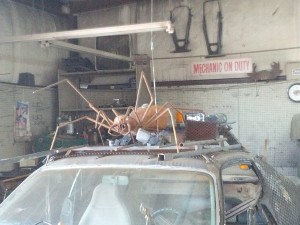As it were.
I found a fairly nice engine stand on Craigslist for $50, listed as needing a caster. And indeed, it was short a caster. And the casters they used were apparently completely non-stock units, because I couldn’t find anything that had the same bolt pattern on the mounting plates anywhere online. Fortunately, I know a welder. 😉 So, I just cut out some mounting plates, clamped them on 90 degrees to the original caster direction (so the bolt heads would clear the legs) and welded on the plates, then bolted the casters I had kicking around on to the plates. See, that’s why I never throw anything away. You never know when it’s going to be useful! It’s totally not because I’m a pack-rat. That accomplished, I picked up the engine, unbolted the transmission from it, and put it on the stand.
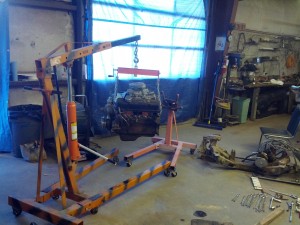
I pretty quickly pulled the rocker covers and intake, and because I was curious, I bought a cheap scale to weigh the heads with.
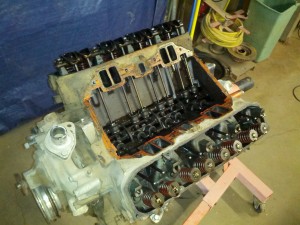

Not as heavy as I was expecting, really. After that, I removed the water pump, the oil pan, and the oil pump. Apparently my skill at this “expectations” thing really sucks, because it turns out that even after you think you’ve drained all the fluids out of an engine, there’s a lot left. Like, a lot a lot. :-/ I’m also pretty sure the oil pan isn’t supposed to be that shape. Dangit.
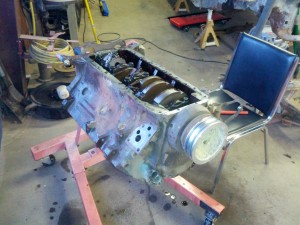
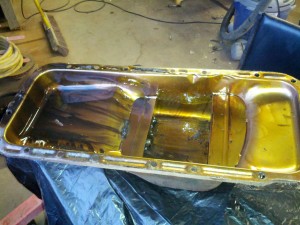
Sorry, I didn’t take a picture of that mess, although you can still see the remnants of it on the floor there under the engine stand. I do have pictures of this mess though! (And the shelves, finally all up and in place.)
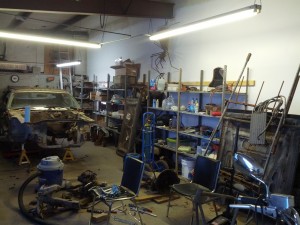
In addition, while I was doing all of that, Eli was busy cleaning 30 years of motorcycle repair shop off of the desk that was in there when we moved in, and hanging up the whiteboard. We have a full 4′ x 8′ sheet of whiteboard. Ph34r our l33+ planning space!
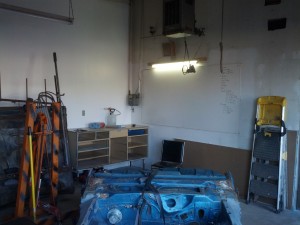
As part of organizing stuff, the transmission went up on the workbench. The transmission is broken. That transfer case is very broken. :-p
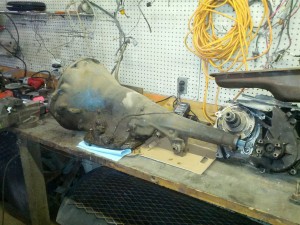
This is a big piece of steel. No, really. 560 pounds of 4340 round rod (I’m not even sure if you’d still call it “rod” at that point, or just “billet”) 10.25″ in diameter and 24″ long. Its eventual fate in life is to become English Wheel… wheels. It is very hard to move. Well, not in a straight line, it actually rolls pretty well, and as it rolls across the concrete, crushing the sand that blows in under the door, it makes a sort of odd singing sound. But getting it to turn is liable to give you a hernia if you aren’t careful.
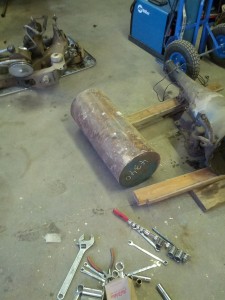
Next up: Pulling the crankshaft and pistons out of the block, and then getting everything vatted and checked.



